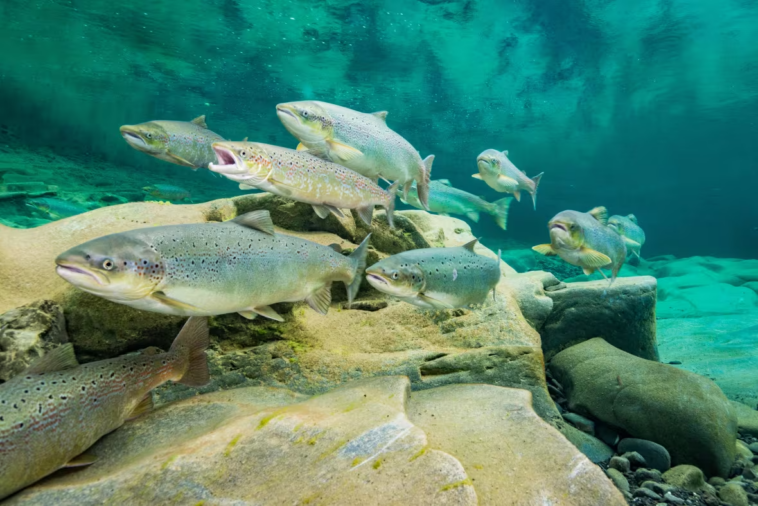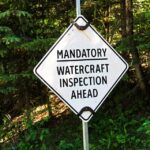A new report released by Fisheries and Oceans Canada (DFO) has found that the declining rate of Newfoundland’s Conne River wild Atlantic salmon population is primarily due to regional aquaculture practices. The publication states that without action, the fish stock could go completely extinct.
“It’s really the magnitude of the decline that we’re seeing in Conne River that’s extremely concerning.”
Travis Van Leeuwen, research scientist for DFO
Out of the nineteen different factors that scientists studied possibly impacting the salmon, they highlighted three leading causes contributing to their decline. Climate change, natural predation, and aquaculture were all identified, with aquaculture farming singled out as the biggest threat since the industry took off in the province in the 1980s.
“It’s really the magnitude of the decline that we’re seeing in Conne River that’s extremely concerning,” Travis Van Leeuwen, a DFO research scientist and report co-author, told CBC News. Since 2020, the river has seen less than 300 salmon returning each year, compared to the average of around 10,000 returning in the 1980s.
“These outbreaks occur when smolt and adults are in the area of the aquaculture.”
Travis Van Leeuwen, research scientist for the DFO
The report focuses on the escaped farmed salmon, which then breed with wild salmon, bringing disease and parasites with them. Sea lice is a significant continued threat to Atlantic salmon due to aquaculture industry escapees. “These outbreaks occur when smolt and adults are in the area of the aquaculture,” added Van Leeuwen. “To think that somehow they’re not affected by this is, I think we’re beyond that now.”

“We are talking about the extinction of one of the best salmon rivers in North America. It’s an absolutely incredible paper.”
Bill Montevecch, local seabird biologist
“It’s been really depressing. We are aware that this has been an issue for a long time,” said Bill Montevecch, a local seabird biologist, to CBC Newfoundland Morning. “We are talking about the extinction of one of the best salmon rivers in North America. It’s an absolutely incredible paper.”
“Aquaculture is entrenched in the west coast in Canada too… but there is a tremendous amount of effort on the west coast [to remove salmon farms]. When we want to see what we can do, I think we just have to look to British Columbia,” he said.
The report comes as Newfoundland is set to expand its aquaculture operations. Both Grieg Seafood Newfoundland and Mowi Canada East, companies also active in BC’s aquaculture industry, will increase their operations along the province’s Grey River.
In response to the proposed expansion, the DFO scientists who authored the report are calling for more studies to track the influence of climate change and disease on Conne River salmon.
“Such data are critical to informing management approaches needed to reverse the decline of this population that is clearly on an extirpation trajectory,” the publication reads.




